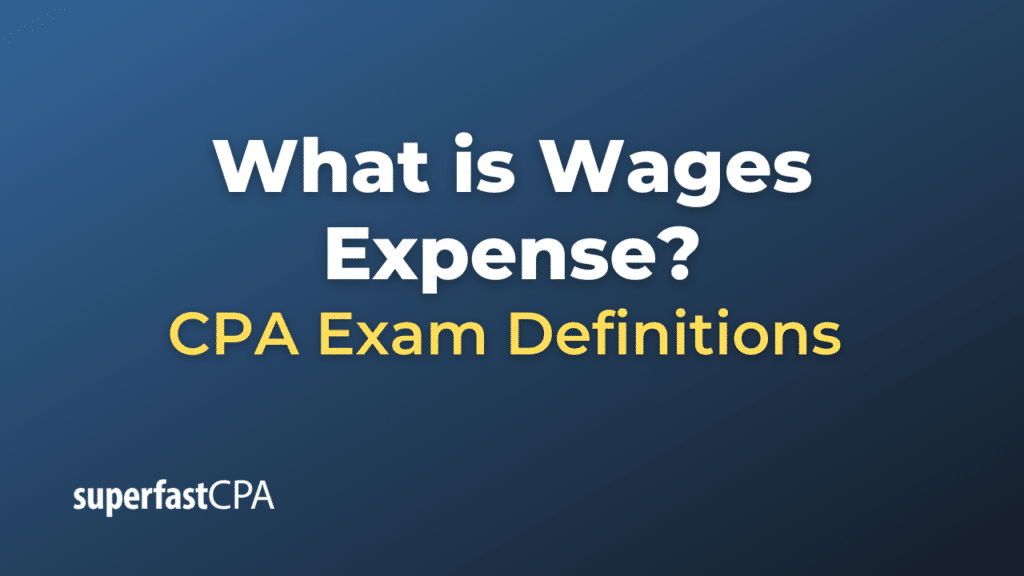Wages Expense
Wages Expense is an account that represents the cost of labor paid to employees for work performed during a specific accounting period. It is a line item that appears on the income statement and is considered an operating expense for businesses. This account includes not only the base salaries or hourly wages of employees but can also encompass additional forms of compensation like overtime pay, bonuses, and any other monetary incentives that are earned and paid within the accounting period.
Wages Expense is recognized under the accrual basis of accounting, meaning it is recorded when the obligation to pay is incurred rather than when the actual payment is made. Therefore, wages that have been earned by employees but not yet paid by the end of the accounting period would be accounted for as a Wages Payable liability on the balance sheet.
Journal Entries for Wages Expense
When wages are paid:
Debit: Wages Expense $X
Credit: Cash $X
When wages are accrued but not yet paid:
Debit: Wages Expense $X
Credit: Wages Payable $X
When accrued wages are eventually paid:
Debit: Wages Payable $X
Credit: Cash $X
Example of Wages Expense
Let’s continue with the example of a small retail company named “RetailCo” to illustrate how Wages Expense is accounted for in a real-world scenario.
Company Details:
- Company Name: RetailCo
- Industry: Retail
- Number of Employees: 3
- Payroll Cycle: Bi-weekly
- Total Wages per Pay Cycle: $5,000
Scenario 1: Regular Wage Payment
RetailCo pays its employees every two weeks. The total wages for this bi-weekly period amount to $5,000.
Journal Entry for Payday:
When RetailCo pays its employees, it records the following journal entry:
Debit: Wages Expense $5,000
Credit: Cash $5,000
In this journal entry:
- The debit to “Wages Expense” increases the expense on the income statement, indicating the cost of labor for that period.
- The credit to “Cash” reflects the outflow of cash, decreasing the company’s cash account on the balance sheet.
Scenario 2: Wages Accrued but Not Paid
Suppose RetailCo’s accounting period ends on December 31, but the next payday isn’t until January 4 of the next year. The employees have worked for one week since the last payday, accruing $2,500 in unpaid wages.
Journal Entry for Wage Accrual:
To recognize this obligation, RetailCo makes the following journal entry on December 31:
Debit: Wages Expense $2,500
Credit: Wages Payable $2,500
In this journal entry:
- The debit to “Wages Expense” increases the expense on the income statement, acknowledging the cost of labor that has been incurred but not yet paid.
- The credit to “Wages Payable” increases the liability on the balance sheet, representing the amount owed to employees.
Scenario 3: Payment of Accrued Wages
When January 4 comes around, RetailCo pays its employees the $2,500 that was accrued.
Journal Entry for Paying Accrued Wages:
Debit: Wages Payable $2,500
Credit: Cash $2,500
In this journal entry:
- The debit to “Wages Payable” decreases the liability on the balance sheet, clearing the amount that was previously owed to employees.
- The credit to “Cash” reflects the actual cash outflow from the company’s bank account.
By properly recording Wages Expense and Wages Payable, RetailCo ensures that its financial statements accurately reflect its operating expenses and financial obligations. This is crucial for both internal management and external stakeholders like investors and creditors to understand the financial health of the company.













